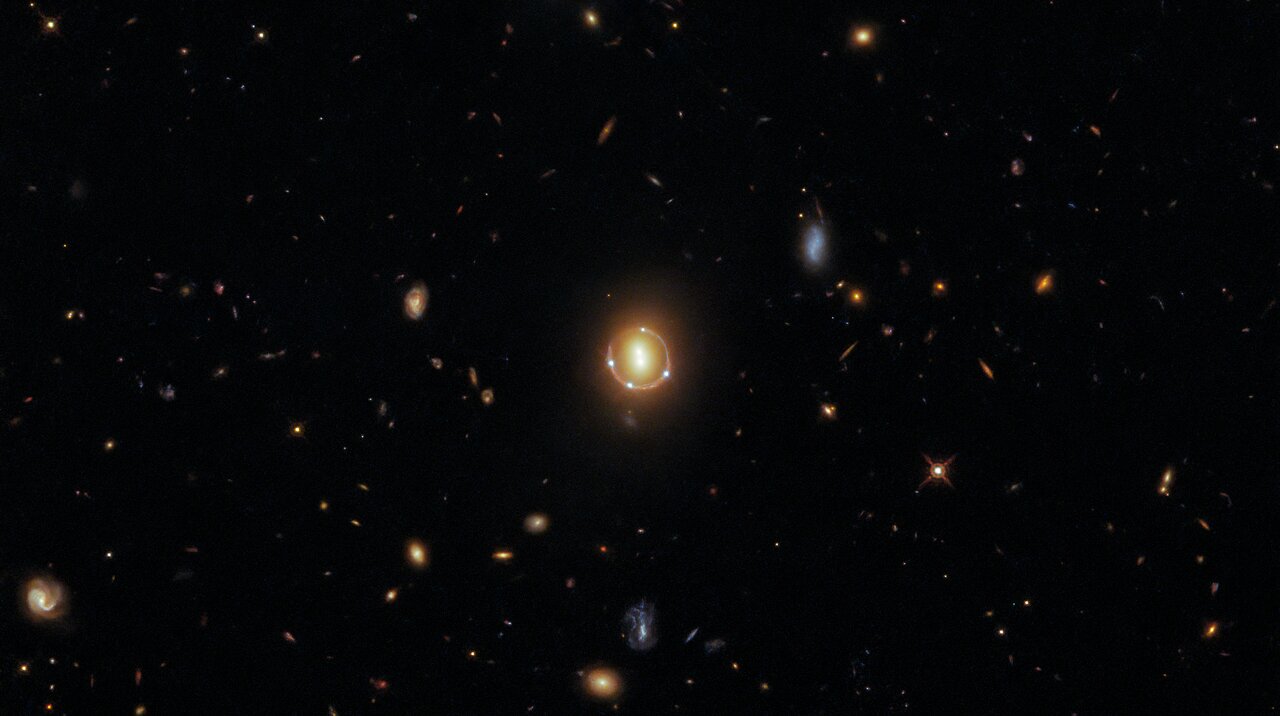Hubble captures gorgeous image of 'Einstein ring' from warped quasar light
Einstein predicted the existence of these rings back in 1915.
A jaw-dropping Hubble Space Telescope image shows an "Einstein ring" magnifying light from the far depths of the universe.
In the image, two galaxies, around 3.4 billion light-years from Earth, warp and deflect light from an even more distant galaxy behind them.
The resulting pattern, predicted by Albert Einstein in 1915, shows six points of light — two clustered in the center and four threaded around a ring of distorted light. However, those bright dots don't come from six galaxies but from three — two in the ring's center and the third a distant quasar whose light has been bent so much that it appears to be four.
Related: The 12 strangest objects in the universe
Quasars are galaxies with supermassive black holes at their cores that gobble up enormous amounts of matter and blast out so much radiation that they're over a trillion times more luminous than the brightest stars.
"The light from the quasar has been bent around the galaxy pair because of their enormous mass, giving the incredible appearance that the galaxy pair are surrounded by four quasars — whereas in reality, a single quasar lies far beyond them," European Space Agency (ESA) officials wrote in a statement.
Einstein's theory of general relativity describes the way massive objects warp the fabric of the universe, called space-time. Gravity, Einstein discovered, isn't produced by an unseen force but is simply our experience of space-time curving and distorting in the presence of matter and energy.
Get the world’s most fascinating discoveries delivered straight to your inbox.
This curved space, in turn, sets the rules for how energy and matter move. Even though light travels in a straight line, light traveling through a highly curved region of space-time, like the space around the two enormous galaxies, also travels in a curve — bending around the galaxies and splaying out into a halo.
Astronomers have identified hundreds of these so-called Einstein rings, and they're not just sought after for the pretty pictures they make. As the rings work to magnify the light they bend, reconstructing the light smears into their original, pre-bent, forms can enhance the details astronomers are able to spot in very distant galaxies. Also, because the extent to which light bends depends on the strength of the gravitational field of the object that bends it, Einstein rings can act as a cosmic scale for gauging the masses of galaxies and black holes. These rings can even help scientists glimpse, by looking for the distant light warping around them, objects that would otherwise be too dark to be seen on their own, such as black holes or wandering exoplanets.
Originally published on Live Science.

Ben Turner is a U.K. based writer and editor at Live Science. He covers physics and astronomy, tech and climate change. He graduated from University College London with a degree in particle physics before training as a journalist. When he's not writing, Ben enjoys reading literature, playing the guitar and embarrassing himself with chess.



